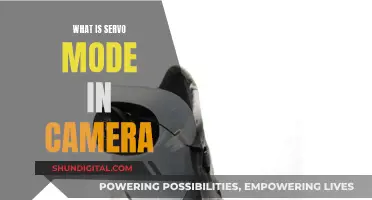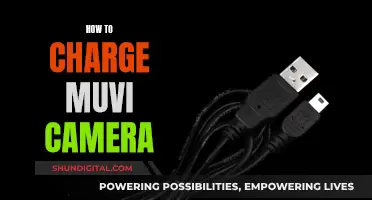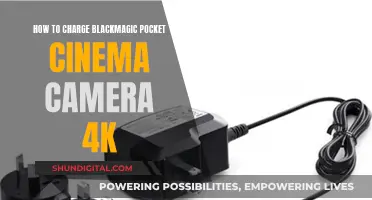
Third-party camera batteries, also known as off-brand or aftermarket batteries, are those made by companies other than the original camera manufacturer. While some photographers are hesitant to use third-party batteries due to concerns about quality and compatibility, others find them to be a more affordable and accessible option. So, are third-party batteries safe for cameras?
| Characteristics | Values |
|---|---|
| Safety | Third-party batteries are generally considered safe to use, although there are some reports of issues such as batteries swelling or becoming hot, and cameras not recognising the battery. |
| Price | Third-party batteries are usually cheaper than original equipment manufacturer (OEM) batteries. |
| Quality | Third-party batteries may be lower quality and may not last as long as OEM batteries. However, some third-party batteries have been reported to function as well as their OEM counterparts. |
| Warranty | Using third-party batteries may void the warranty of the camera. |
| Power | Third-party batteries may have lower power and shorter battery life compared to OEM batteries. |
| Compatibility | Third-party batteries may not be compatible with all camera models, and camera companies may occasionally release firmware updates that lock out the use of third-party batteries. |
What You'll Learn

Third-party batteries are often cheaper than original manufacturer batteries
Third-party batteries, on the other hand, are generally a quarter to half the cost of OEM batteries. For example, the BM Premium version of the LP-E6NH battery for Canon DSLR and mirrorless cameras is about a third of the cost of a Canon camera battery. Similarly, ENEGON offers EN-EL15c batteries for Nikon cameras at half the cost of the Nikon-branded batteries.
While third-party batteries are more affordable, it's important to consider that they may not always perform as well as their OEM counterparts. Users sometimes report that third-party batteries deplete faster or have a shorter lifespan. This is because third-party batteries do not always offer the same capacity as the original batteries. For instance, the Wasabi Power EN-EL15 battery for Nikon cameras has a lower capacity of 2000 mAh compared to the 2280 mAh of the Nikon-branded battery.
However, it's worth noting that some third-party batteries do offer more storage capacity than the originals. Additionally, some photographers have reported that certain third-party batteries function exactly like their OEM counterparts, even when shooting at high frame rates.
In summary, while third-party batteries are often cheaper, it's important to weigh the cost savings against potential performance differences. Some third-party batteries may offer similar or even superior performance to the OEM batteries, while others may fall short in terms of capacity and lifespan.
Zumimall Camera Charging Time: How Long Should You Wait?
You may want to see also

They are easily available online
Third-party camera batteries are easily available online. You can find them on Amazon, B&H, and other dedicated photography websites.
When searching for third-party batteries, it's important to compare like with like in terms of compatibility and price. The names of these batteries are usually a series of letters and numbers that only make sense to the camera company. For example, the BM Premium LP-E6NH battery is compatible with Canon DSLR and mirrorless cameras, while the Neewer NP-FZ100 battery is compatible with Sony Alpha series mirrorless cameras.
Some of the best third-party batteries for popular camera brands include:
- BM Premium LP-E6NH battery for Canon users.
- BM Premium EN-EL15c battery for Nikon users.
- Neewer NP-FZ100 battery for Sony users.
- Wasabi Power NP-W126 battery for Fujifilm users.
These batteries are known to be safe, reliable, and offer significant cost savings compared to their brand-name counterparts.
GoPro 4 Charger Cord: What Size Do You Need?
You may want to see also

They come in a variety of shapes and sizes
When it comes to third-party batteries for cameras, there is a wide variety of options available, and they come in various shapes and sizes. This is because camera companies often upgrade their batteries and introduce different-sized units for specific product lines. Therefore, it is essential to ensure you are selecting the correct counterpart to avoid any compatibility issues.
For instance, Canon has its own line of batteries, and they are considered the Original Equipment Manufacturer (OEM). However, there are numerous third-party options available, such as the BM Premium LP-E6NH battery, which is compatible with Canon DSLR and mirrorless cameras. This battery offers a similar duration as the Canon-brand batteries and comes with a double battery pack and charger.
Similarly, for Nikon users, the BM Premium EN-EL15c battery is a great option, as it is compatible with Nikon DSLR and mirrorless cameras and offers a decent 2280 mAh capacity.
For Sony camera users, the Neewer NP-FZ100 battery is a popular choice, as it is compatible with all Sony Alpha series mirrorless cameras and offers multiple charging options.
These are just a few examples of the variety of third-party batteries available, and it is important to note that they may not always be as powerful as their original counterparts. However, they often provide a more affordable option without compromising too much on quality and performance.
Best Buy's Camera Battery Charger Options Explored
You may want to see also

They may not last as long as original manufacturer batteries
Third-party camera batteries are often cheaper than their original manufacturer counterparts, but they may not last as long. While some photographers have reported that third-party batteries last as long as the brand name, others have found that they drain faster.
Take, for example, the milliampere-hour (mAh) for Nikon’s EN-EL15c and the Wasabi equivalent. The brand name battery has 2280 mAh, while the Wasabi has 2000 mAh. In this case, the higher number in the battery gives you more operating time.
Lower-powered batteries may not achieve your camera’s maximum frame rate (or burst mode). However, this is not necessarily a problem—just don’t expect more than you are buying.
It's worth noting that third-party batteries are not always less powerful than their original counterparts. Many good aftermarket batteries have more storage capacity. For example, the Powerextra LP-E6NH battery for Canon DSLR and mirrorless cameras has a higher capacity of 2950 mAh compared to Canon batteries.
Camera Battery Grips: Are They Worth the Hype?
You may want to see also

They could damage your camera
Third-party batteries are made by companies that did not create the original battery. They are often cheaper than original batteries and can be found easily online. However, they are usually lower quality and may not last as long as original batteries. In some cases, they could even damage your camera.
When shopping for a third-party battery, it can feel like a gamble as there is no guarantee that it will match the capacity or lifespan of your camera's original battery. It might struggle to hold a charge, or it may die after a year.
That being said, some off-brand camera batteries work just fine. Established third-party manufacturers like Wasabi and SterlingTek are appreciated by photographers for their reliable products and customer service.
However, if you are not willing to take the risk, it is best to purchase an "official" battery from your camera's manufacturer. These batteries are more expensive but are likely to hold a charge for longer and last several years.
Additionally, manufacturer warranties typically do not cover damage caused by third-party batteries or accessories. So, if a third-party battery damages your camera, you will likely be responsible for the cost of repairs.
In conclusion, while third-party batteries can be a great way to save money, there is a risk that they could damage your camera. To minimise this risk, it is important to purchase from reputable third-party manufacturers and trusted retailers.
Charging the Fuji X-A10: A Step-by-Step Guide
You may want to see also
Frequently asked questions
In general, yes, it's safe to use third-party batteries for cameras. While some reviews note problems such as batteries swelling, not being recognised by the camera, or ruining cameras, these issues appear to be rare when buying from established companies.
A third-party battery is made by a company that didn't create the original battery. They are often referred to as "off-brand" or "aftermarket" batteries.
Third-party batteries are usually less expensive than original batteries and can be found easily online. They also come in a variety of shapes and sizes, so you can find the perfect one for your camera.
Third-party batteries are usually lower quality and may not last as long as original batteries. In some cases, they may even damage your original battery pack over time. It can also be difficult to tell if a third-party battery is fake, so it's important to buy from reputable sources.
Third-party batteries offer significant cost savings compared to original batteries. While there may be some potential problems, these are outweighed by the affordable cost.







